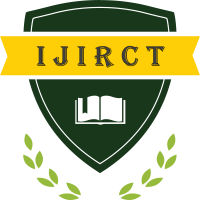An Improved iUPQC fed with a novel FLC Controller to Provide Additional Grid-Voltage & power Regulation
Author(s): Y.Sarojarao, K.Amala Rajani
Publication #: IJIRCT1601016
Date of Publication: 03.11.2016
Country: India
Pages: 91-99
Published In: Volume 2 Issue 3 November-2016
Abstract
This In order to meet PQ standard limits, it may be necessary to include some sort of compensation. Modern solutions can be found in the form of active rectification or active filtering. A shunt active power filter is suitable for the suppression of negative load influence on the supply network, but if there are supply voltage imperfections, a series active power filter may be needed to provide full compensation. In recent years, solutions based on flexible ac transmission systems (FACTS) have appeared. The application of FACTS concepts in distribution systems has resulted in a new generation of compensating devices. A fuzzy logic controller based improved unified power quality conditioner (IUPQC) is the extension of the unified power-quality controller (IUPQC) concept at the distribution level. It consists of combined series and shunt converters for simultaneous compensation of voltage and current imperfections in a supply feeder. The fuzzy logic controller (FLC) fed IUPQC consists of one series and one shunt converter. It is connected between two feeders to regulate the bus voltage of one of the feeders, while regulating the voltage across a sensitive load in the other feeder. In this configuration, the voltage regulation in one of the feeders is performed by the shunt-VSC. However, since the source impedance is very low, a high amount of current would be needed to boost the bus voltage in case of a voltage sag/swell which is not feasible. It also has low dynamic performance because the dc-link capacitor voltage is regulated.
Keywords: iUPQC, Grid, Fuzzy Logic Controller, FACTS, Power Quality.
Download/View Count: 483
Share this Article
